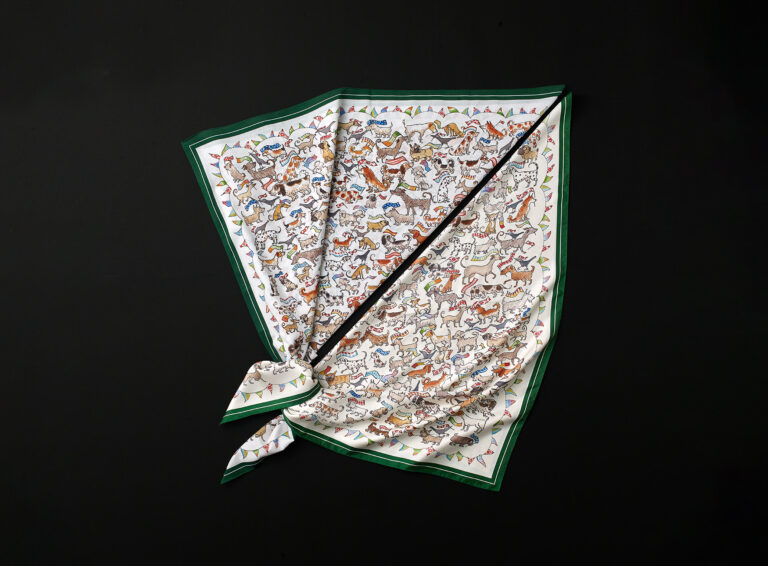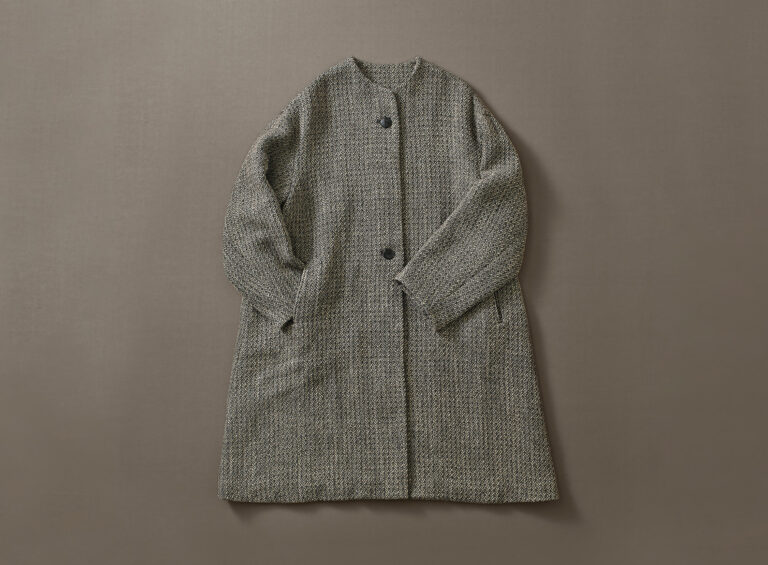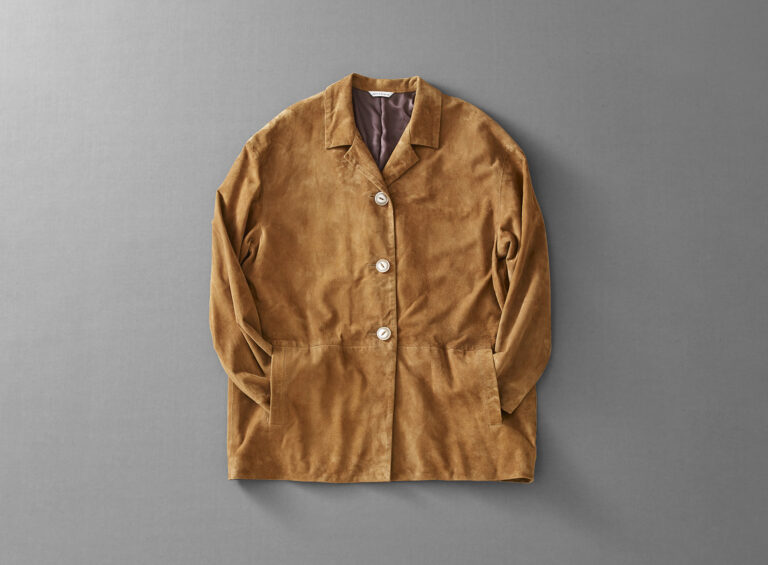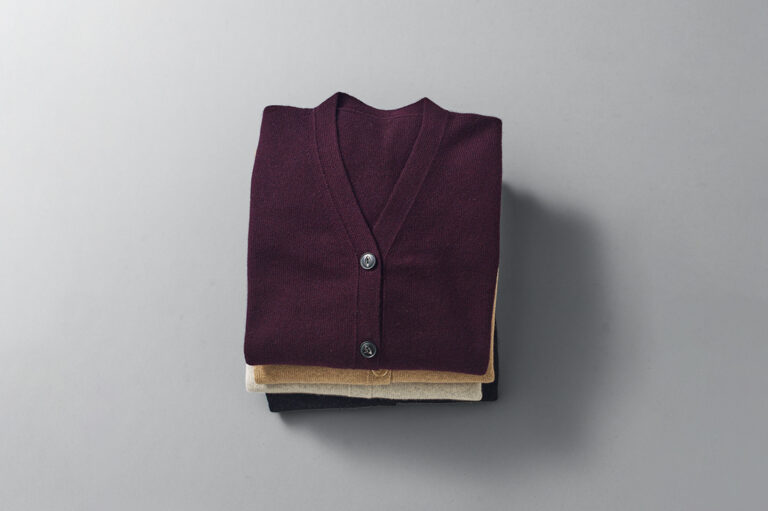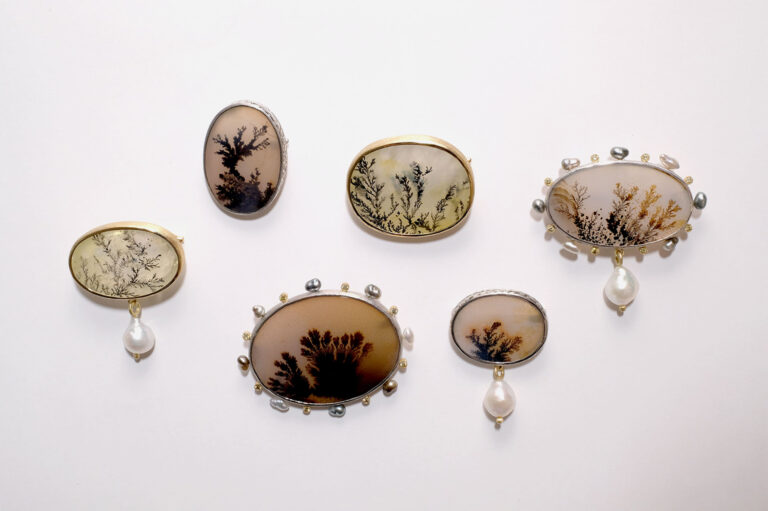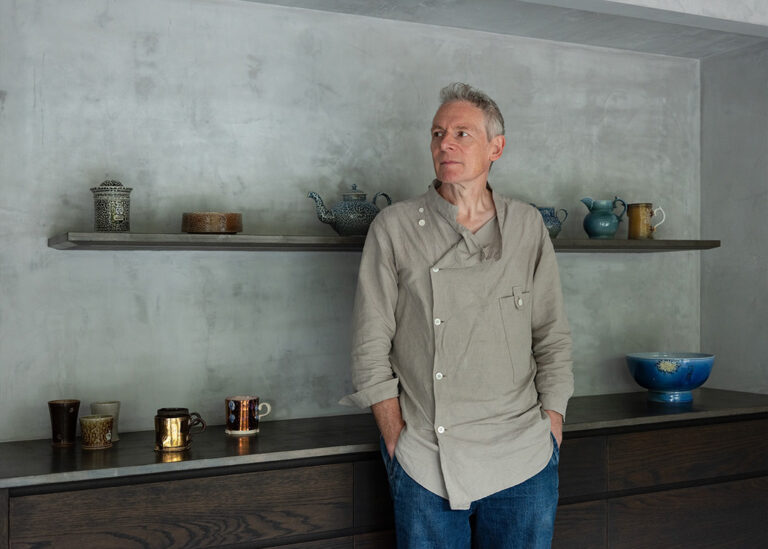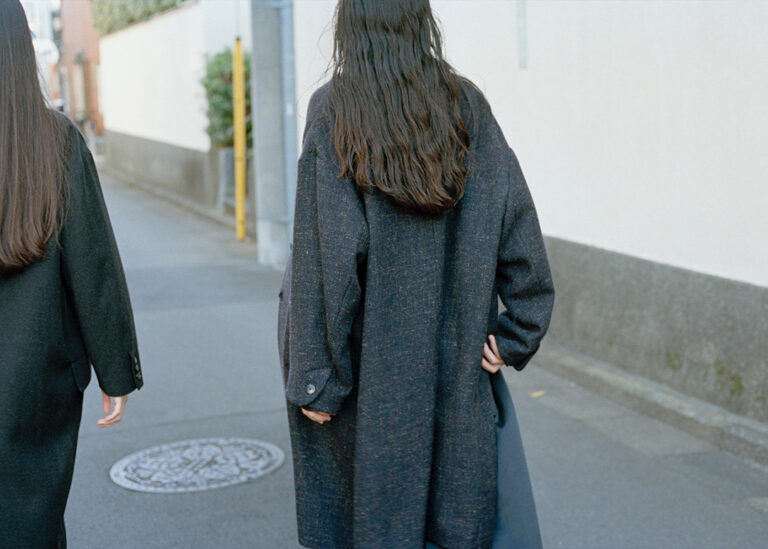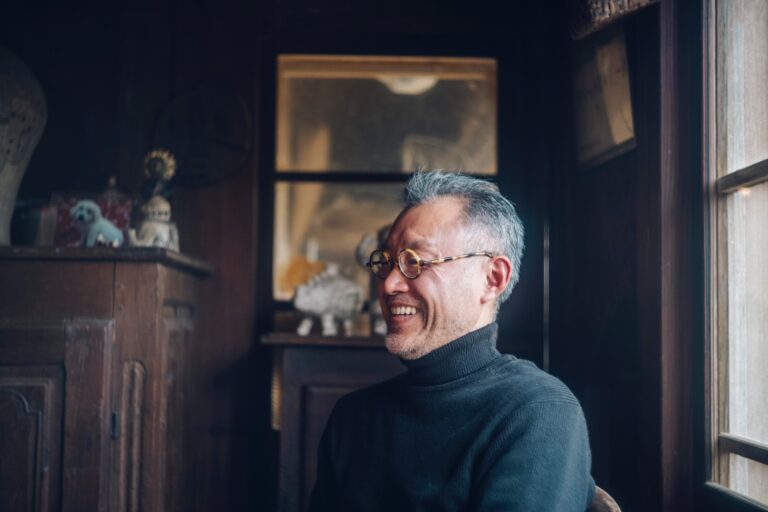Makers
We are introducing the people behind our selected brands and artisans works sold art our shops.
* Depending on the season there some brands and artisans will not be featured.
-
Woodworker and photographer. Bobby Mills’ independent workshop resides in North Devon, England. He creates one-off handmade furniture and objects from locally and nationally sourced wood, made by a simple method only using a woodturning lathe. He taught himself how to handle and make wood at a young age there are also Scandinavian influences from his mother Denmark heritage. Mills has a first class honours degree in photography from the University for the Creative Arts, and all of his images of his woodwork are taken by himself personally.
-
Cosi Tabellni pewter is handmade in northern Italy by artisans who have honed their craft using methods gleaned over many generations. The number 95, stamped on their products, certifies that the pewter is made from 95% tin. Additional stamps indicate the workshop and location. Pewter tarnishes very slowly and requires almost no maintenance. Each piece is made with a lead-free alloy of tin, copper, and antimony that is food safe.
Official
Stores
Craft & Artisan
-
An illustrator and textile designer from Scotland, she studied textile design at Central Saint Martins and established herself as a stylist primarily for magazines. After returning to Scotland, she began creating felt works for her children. Her unique, realistic, and heartwarming creations quickly gained popularity, attracting attention from galleries and notable individuals.
Stores
Craft & Artisan
-
Edward Wohl began his career in woodworking upon graduating from the University of Washington in 1967. His workshop is situated in the natural landscape of Wisconsin, from which Wohl draws inspiration as he creates his beautifully shaped work. Particularly drawn to bird's-eye maple and North American cherrywood, his handmade pieces make sensitive use of grain pattern.
Official
Craft & Artisan
-
Founded in 1910, this German cutlery manufacturer is renowned for its craftsmanship. Every piece is forged from a single sheet of stainless steel, with each step—from forging to polishing and finishing—carried out by hand. The handles are made from woods such as olive or ebony, each with unique grain patterns that deepen in character with use. The classic design and impeccable quality of these pieces exude a sense of tradition and craftsmanship, making them items you'll want to pass down through generations.
Craft & Artisan
-
Born in Munich, Germany in 1965, Ernst Gamperl is a woodturner and designer of bowls and vessels. After graduating from high school, he was first trained as a cabinet maker and stumbled onto woodturning by chance. An autodidact with no previous knowledge of the art, but equipped with a book on woodturning, he was unhampered by convention in his approach to turnery. After a few years of research and patient learning-by-doing, he perfected his technique. His first atelier was established in 1990. Three years later, he entered the Fachhochschule Hildesheim, Germany where he earned the title of Master of Turnery. In 2017, Gamperl was honored with the Loewe Foundation Craft Prize.
-
Ginneko graduated from Chelsea College of Art, UK, in 2002 with a degree in sculpture and began working with a metalworker in Kyoto in 2005. She currently lives and works in Kyoto. Each piece is individually forged by hand, and each piece has a different look and feel. The lacquer baking process brings out the best of the material. Every piece of her metalwork has a different look and feel.
Craft & Artisan
-
Owned and operated by the Goto family, Hakkodo has crafted traditional religious sculptures over generations, beginning with the production of Buddhist sculptures and later, during the Meiji era, Kamakura-bori sculptures. Hakkodo was highly praised for the artistic value of its pieces at the World Fair in Paris, and at the end of the 19th century, opened the store that is still in operation today in front of Tsurugaoka Hachimangu Shrine in Kamakura. The Goto family continues to work in the original style, which has been handed down from one generation to the next into the modern age.
Official
Craft & Artisan
-
Lacquerware artist, born in Kanagawa Prefecture in 1977. Coming from a family of lacquerware artisans, Yazawa grew up using lacquerware daily, developing an appreciation for its comfort and beauty from an early age. He studied film at university but later chose to pursue a career in lacquer arts. Working primarily with domestically grown wood, he carefully selects techniques such as woodturning and hand-carving to suit each form. Yazawa’s simple vessels, designed with the user in mind, embody both the warmth of handcraftsmanship and a refined elegance.
Craft & Artisan
-
A glass sculptor born in 1989 in Miyagi Prefecture. At 18, he was first introduced to glassmaking at Akita University of Art and Design, where he became fascinated by the fluid transformations of glass. He graduated from the Toyama Glass Art Institute in 2012. Currently, he is associated with Akita Araya Glass Studio, where he independently handles the entire creation process of his works. He emphasizes the uniqueness and character that emerge from handcrafted items. His notable creations include facet-cut perfume bottles, as well as sake vessels and various objects.
-
Masashi Ifuji crafts simple and functional wood objects that draw on the beloved traditional objects of diverse cultures. His workshop IFUJI in Matsumoto, Nagano, is known for its masterful renditions of classics, including the shaker box and the traditional Japanese cupboard. In addition to the workshop, he operates Laboratorio, a cafe, shop, and gallery devoted to clothing, food, and housewares.
Official
Craft & Artisan
-
ikken is a design studio and a furniture workshop established in Kyoto in 2014. A partnership between two professionals, first-class Japan licensed architect, Takato Yoshida and furniture craftsmen Kiyoo Yamanaka who were classmates in the department of architecture at university. Yoshida worked at the Lemming House and was the apprentice of Yoshifumi Nakamura. The year before the establishment of ikken, he worked very closely with furniture artist Hitoshi Onishi in Kyoto and continues to do so today. Yoshida develops the furniture design, while Yamanaka crafts the built-in furniture, and their collaboration with Onishi involves his production of furniture items such as chairs and tables.
Craft & Artisan
-
A manufacturer that handles clothing brushes and shoe brushes, founded by brush craftsman Kazuo Ishikawa, who meticulously researched every aspect—from materials to manufacturing methods—to create the ideal clothing brush. The brushes made from horse tail hair, which combines a soft texture with strong resilience, are renowned for their ultimate quality and the effect they have on fabrics. They are available in luxury department stores and boutiques, particularly those specializing in menswear.
Official
Craft & Artisan
-
Established in Kyoto in 1875, KAIKADO is the oldest tea canister maker in Japan. Their handcrafting process, which involves approximately 130 steps, has been meticulously preserved through the centuries. The focus is on the natural beauty of the canisters, with their inherent, understated elegance becoming more refined over time. The precise self-closing mechanism of the lids, a hallmark of KAIKADO’s tea canisters, highlights the exceptional skill and artistry of traditional handwork.
Official
Craft & Artisan
-
Ko Kado specializes in the traditional craft of karakami, a decorative paper printed with wood-block stamps. Kado graduated from the Academy of Art University in San Francisco with a degree in graphic design. He worked as a freelance designer in New York before returning to Japan to join a celebrated karakami studio. He struck out on his own in 2009, opening his independent shop and studio Kamisoe in Nishijin, Kyoto. Kado develops his designs specially for individual clients, taking into consideration their purposes and needs. His designs are distinguished by a careful balance between figure and ground – between the open space of the sheet of paper and the rhythmic pattern of the stamp.
-
Potter Kan Ito was born in 1971 and began his work in ceramics under the guidance of his father, the celebrated potter Hitoshi Tachibana. He opened his own kiln in 2006. His works are treasured for the particularity of his glazes, which give each vessel a profound and sometimes imposing presence.
Craft & Artisan
-
Born and raised in the lush natural surroundings of Sokcho, Gangwon Province, South Korea. Kang’s journey as a woodworker began with crafting wooden toys for his child, which led him to pursue woodworking in earnest. Drawing inspiration from nature, he creates a wide range of works, from everyday vessels to large-scale pieces. Using primarily locally sourced wood, he incorporates the traditional Korean lacquer technique Ottchil (옻칠) while also employing a unique high-temperature curing method he developed to enhance the durability and functionality of his pieces. Kang’s lightweight, beautifully crafted works, which honor the natural qualities of wood, are highly regarded worldwide.
Official
Craft & Artisan
-
Shimomoto was born in Kochi in 1978 and is revered for his production of everyday objects made with bamboo and charcoal. In 2001 he set up a kiln in his hometown, the former Kagami Mura. His bamboo works are both strong and flexible, and their distinctive color is achieved through a smoking process.
Stores
Craft & Artisan
-
Kazumi Tsuji was born in Ishikawa in 1964. After graduating from California College of the Arts, she joined the Utatsuyama Craft Workshop in Kanazawa as a glass specialist. In 1999, Tsuji established her own glass studio, factory zoomer, with a focus on creating new standards for glassware. In 2005, she opened factory zoomer/shop, and in 2010, she was appointed chief director of a lifestyle craft project in Kanazawa.
Official
Craft & Artisan
-
Born in 1976 in Fukushima, Kazuto Yoshikawa is a designer of wooden utensils, objects, and furniture. Graduating with a degree in business from Keio University, he began his career at the furniture manufacturer CASSINA IXC.Ltd. After an extended stay in France while on paternity leave, he followed his deepening interests in woodworking and entered the Gifu Academy of Forest Science and Culture, where he built up his knowledge of woodworking techniques and the forestry traditions of Japan. He currently produces his works in Tokyo.
-
Kenichi Seki is a wood lacquer artist born in 1982 in Izumi-shi, Osaka. Seki first encountered the world of craft when his former university professor was working for a woodworking project of the Joseon dynasty. After graduating from university, Seki became an apprentice to the wood lacquer artist, Kazumasa Fujisaki. In 2012, he became an apprentice to the lacquer artist, Akito Akagi. Since becoming independent in 2019, Seki has based his artistic activity in Wajima-shi, Ishikawa.
Official
Craft & Artisan
-
Born in 1966 in Toride City, Ibaraki Prefecture, Takanaka left Gakushuin University and began self-studying calligraphy and painting, drawing inspiration from Chinese classics, Buddhist scriptures, and Japanese literature. In 1993, he built his own wood-fired kiln in Otaki, Chiba Prefecture, and embarked on a serious career in ceramics. His works, created while living a semi-self-sufficient lifestyle, are noted for their unique sensibility and expression. He has held solo exhibitions at various galleries, showcasing his distinct artistic vision.
Craft & Artisan
-
A ceramic artist, born in Tokyo and later moving to Seoul as a teenager, Kim began studying ceramics at an art university in Korea and later honed her craft in Japan and the UK, establishing a distinctive style that fuses the traditions of East Asian ceramics with modern British ceramic practices. Her work, shaped on the potter’s wheel, is characterized by simple forms imbued with a quiet stillness, while at the same time exuding a powerful, sensory presence. Widely acclaimed around the world, she continues to create from her own studio in Seoul. This piece was selected as a finalist for the 2024 Lexus Creative Masters Award.
Craft & Artisan
-
The history of Kitaworks dates back to 1978 with the founding of Kita Welding Industry, a community-based factory in the town of Tsuyama-shi in Okayama prefecture. The company was renamed Kitaworks in 2009 and continues its more than forty-year tradition of producing custom-made furniture using welding techniques. The pieces are made with a range of metals, including iron, stainless steel, copper, and brass, and are specially designed to function seamlessly with existing furniture and in the spaces where they will be enjoyed. Kitaworks also designs and manufactures furniture for retail spaces.
Official
Craft & Artisan
-
Ceramic artist. Born in 1959. After completing his master's degree at Seoul National University, he became a professor at Chung-Ang University College of Arts, where he is recognized as a leading figure in contemporary Korean white porcelain. He leads a near self-sufficient lifestyle in Anseong, where his studio and home are located, tending to fields and raising chickens. His work is based on the techniques of Joseon Dynasty white porcelain, crafting simple, functional white porcelain pieces. His tableware, which strongly reflects his love of cooking, comes in a variety of forms and is well-suited for everyday use. A&S began offering his works in 2012.
Official
Craft & Artisan
-
In his workshop located in the village of Kisogun in Nagano, bamboo craftsman Masaaki Iijima carries out every exacting step of his basket production. Skillfully selected bamboo from the surrounding mountains is cut into higo strips and colored with natural plant-based dyes. This begins an extended period of contemplation to understand the unique aesthetic characteristics of the bamboo that Iijima will ultimately transform into useful objects using a wide range of traditional Japanese basket weaving techniques, such as twill and armor plaiting.
Craft & Artisan
-
Ceramic artist, born in 1983 in Fuji City, Shizuoka Prefecture. After graduating from Keio University with a major in Aesthetics and Science of Arts, he began training in Karatsu ware in Karatsu. He studied under Kiyomi Kawakami from 2009 and became independent in 2012. He established his workshop in Torisu, Hamatama, Karatsu City, and is currently active with solo exhibitions. He carries on the tradition of Karatsu ware, handling the entire process from clay extraction to kiln firing himself. The pieces he creates are elegant and practical, suitable for a wide range of settings from restaurants to home dining tables.
Official
Craft & Artisan
-
Glass artist Masao Kozumi was born in Kumamoto Prefecture in 1979. After graduating from the Toyama Institute of Glass Art, he began creating works in Toyama Prefecture in 2005. He is now based in Gifu Prefecture, where he primarily presents his work through solo exhibitions. Kozumi’s glass pieces are featured in the interior design of select ARTS & SCIENCE locations.
Stores
Craft & Artisan
-
Minoru Narikawa was a forester in Omachi- shi, Nagano when he started creating wooden items using the derelict timbers from the forest thinning process. The smooth touch and the shimmer of his beautiful works are created by the technique called fukiurushi. The lacquer is applied layer by layer and carefully polished after each drying. This technique requires a great deal of time and effort. Narikawa centers his artistic activities locally and is present at Craft Fair Matsumoto.
Craft & Artisan
-
Mitate was established in April 2013, in Shichiku, Kita-ku in Kyoto. Mitate creates flower arrangements and ornaments using boxes by using wild flowers and plants of the season. Mitate’s aesthetics are expressed through its unique style to create something completely different from the original material.
-
Lacquerware artist Mitsuhiro Yazawa was born in Kanagawa Prefecture, Japan, in 1946. After withdrawing from Musashino Art University in 1966, Yazawa studied woodcarving techniques under a sculptor for two years. He learned the technique of lacquer at his father’s studio, which specialized in Kamakura-bori. As an independent artist, Yazawa’s philosophy is to create pieces that deepen in expression and beauty as they are used and to work unrestricted by any preconceived framework to develop a rich range of techniques. Yazawa regularly presents solo exhibitions throughout Japan.
Craft & Artisan
-
Born in 1982, Naho Kamada honed her craft as a metal smith beginning with tools for the tea ceremony. She began working independently in 2008, creating alluring, strong works adorned with delicate details. Taking inspiration from ancient pieces from many regions throughout the world, she continues to create vessels, cutlery, and objects in pure silver and brass.
Official
Craft & Artisan
-
Ojiro kakumono ten was founded by Tadashi and Miho Ojiro in 2008. They studied the craft of making square bamboo baskets under the master craftsman, Tadayoshi Kantake. The couple is currently based in Oita, a region famous for the highest quality of bamboo and materials. In the kakumono technique, the craftsman creates separately the body, lid, and handles of the basket, combining them together in the end. The bamboo is bent and made pliable with the heat from fire, a unique method called himage. In addition to square bamboo bags, Tadashi and Miho Ojiro also create tools for everyday life. Their products are available primarily at exhibitions.
-
Peter Ivy is a glass artist based in Toyama Prefecture, Japan, where he operates the studio "Fluid Research Institute." He creates a diverse range of works, from artistic pieces to practical items. Driven by the concept of "wanting to create works whose beauty is completed through use," he produces delicate yet warm and functional pieces. His glass creations seamlessly blend into various environments, showcasing impressive harmony in soft, muted colors. In 2013, he began the “KOBO” series in collaboration with food stylist Midori Takahashi.
Official
Stores
Craft & Artisan
-
Woodworker. Born in 1952 in Fukui City. In 1981, he established Persona Studio in Matsumoto City, Nagano Prefecture. He creates wooden vessels for everyday use, similar to ceramics, opening a new field in woodworking that had previously focused primarily on furniture. In addition to practical vessels, he also produces intimate paintings and sculptures inspired by everyday life, such as building blocks and kettles. In 2011, he opened the gallery "10cm" in Matsumoto City.
-
Atsushi Sakai, born in 1969 in Aichi Prefecture, is a woodworking artisan. After completing his university education, he entered the corporate world, but his passion for craftsmanship grew, leading him to start creating small wooden pieces in 1994. He opened his own shop, Sajiya, in Kunitachi, Tokyo, in 2006, and now bases his activities in Ushimado, Okayama Prefecture. Since 2018, under the name Sho Bok Si, he has embarked on new creative ventures. His handcrafted wooden spoons, which blend natural forms with practicality, have garnered a dedicated following. A&S began offering his works in 2018.
Craft & Artisan
-
Based in a studio in Iwakura, Kyoto, Sekizuka handles all aspects of footwear design, manufacturing, and sales, providing meticulous service that includes custom orders, adjustments, and repairs after purchase. Every process is created through skilled craftsmanship. They challenge the fixed notion that footwear is solely associated with traditional Japanese attire, embracing a more inclusive interpretation of the word and its meaning. The owner, Shinji Sekizuka, trained for about ten years at a footwear store in Kyoto before opening his own studio and gallery in Iwakura, Kyoto, in April 2020.
Official
Craft & Artisan
-
Shizu Okino and her daughter Karen Okino Butzbach founded Shizu Designs in California as a platform for their evolving collection of stone works. Natural stones are wrapped and embellished with ancient Japanese ornamental basket plaits and knots, transforming each into a small artistic work. The two-woman design team explores the essence of tranquility and peace through each handcrafted object.
Official
Craft & Artisan
-
Founded in 1947 in Macerio, Italy. After World War II, Enrico de Carlini, along with his family, established a hand-blown glass Christmas ornament workshop to brighten the somber atmosphere of society. Each year, the collection is rich with witty motifs, and to this day, every ornament is crafted individually by artisans, using the same methods as when the workshop was first established.
Stores
Craft & Artisan
-
Steve Harrison is an English potter born in 1967. After obtaining his MA in ceramics at the Royal College of Art, he set up his workshop and his kiln on the outskirts of London, where he now bases his artistic activities. He is known for his mugs and jugs created by the salt glaze technique, which uses common salt for the glaze coating.
Craft & Artisan
-
The glass workshop of Studio Prepa is devoted to the principle of allowing the unique personality of each piece to develop out of the material itself and the work process. To realize this delicate collaborative dialogue between craftsman, material, and technique, the entire process from design to production must be carried out within a single, unified workshop. The glass artists are able to look over every detail of each piece as they nurture the plain and simple expression of the object’s shape, function, and texture.
Craft & Artisan
-
Tasuku Mitsufuji was born in Hyogo Prefecture in 1962. After graduating from the Faculty of Fine Arts at Kyoto Seika University, he returned to Hyogo Prefecture, beginning his work as a potter in the city of Yabu. In 2004, he relocated to Asago, where he built a pit kiln in the lush, undeveloped terrain between the foothills and the region’s agricultural lands (satoyama). Mitsufuji’s ceramic work is deeply influenced by his personal experiences and fascination with kaiseki haute cuisine. Using a wide range of production techniques, he has developed a collection that is particularly focused on vessels that complement the aesthetic subtleties of this multi-course culinary tradition.
-
In 1919, the founder of Tosai established its first kiln at Otowasan Kiyomizudera in Rakuto. In 1936, Tosai opened its store in Ginza, followed by another store in Kiyomizu, Kyoto, in 2000. By combining the elegance of Kyoto with the chic touch of Tokyo, Tosai continues to create traditional pottery. Their skilled artisans bring to life patterns and shapes that highlight the four seasons of Japanese culture.
-
Master scissor and knife craftsman Shoji Umeki carries on an ancient tradition of blacksmithing that spans thirty-seven generations. His celebrated Tane scissors and kitchen knives are produced on Tanegashima Island, where once many artisans worked with the plentiful iron sand of superb quality. Today, Umeki Scissor Manufactory is the sole producer of handcrafted scissors made with the traditional forge welding technique.
Craft & Artisan
-
YALI Glass is a glass brand created by the founder and designer, Marie-Rose Kahane. After studying art history and psychology at the University of Jerusalem, she began her career as a costume designer. In 2009 Kahane moved to Venice, where she launched her Murano glass collection in celebration of “simplicity”. Her works are known for combining feminine delicacy with the traditional techniques of the master glass blowers on the island of Murano.
Official
Craft & Artisan
-
Born in Okayama in 1959, Yoshifumi Yamamoto transitioned from the world of skiing to woodworking after graduating from university. He studied woodworking in Nagano and opened his first atelier in Kiso. Later, he moved to a workshop facing a small bay in his hometown of Okayama, where he creates works in wood and lacquer. In 2006, he hosted an exhibition titled "Learning from the Shaker Style," and since 2013, he has been serving as the director of the Ushimado Craft Walk, engaging in a wide range of activities.
Craft & Artisan
-
Born in 1981 in Saitama Prefecture, Yumi Nakamura is a metalsmith. She graduated in 2005 from Musashino Art University, Department of Industrial, Interior and Craft Design, majoring in Interior Design, and began working with metal in 2008. After relocating to Nara Prefecture for a period, she is now based in Tokyo, where she develops her creative practice. In addition to holding solo exhibitions in Japan and abroad, her recent work extends beyond craft to include collaborations in the fields of art and fashion.
Official
Craft & Artisan
-
A product line launched in 2012 by ceramicist Kan Ito in his role as a designer, it draws inspiration from the robust pottery created by anonymous Edo-period craftsmen, who lived a life combining farming and pottery making and created each piece with focused attention. Today, it produces items that support a healthy and aesthetically pleasing lifestyle, crafted with advanced techniques. For example, the oval plate gains added elegance from a raised foot on its underside, and its milky-white porcelain makes dishes stand out beautifully.
Official
Craft & Artisan
